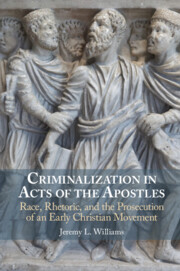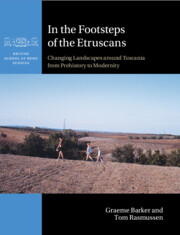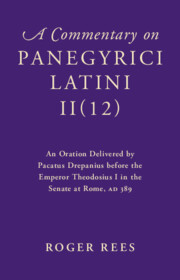Refine search
Actions for selected content:
23989 results in Ancient history
Dedication
-
- Book:
- Knowledge, Faith, and Early Christian Initiation
- Published online:
- 11 October 2023
- Print publication:
- 19 October 2023, pp v-vi
-
- Chapter
-
- You have access
- Open access
- HTML
- Export citation
1 - Developments in Imperialism
-
- Book:
- The High Tide of Empire
- Published online:
- 26 August 2023
- Print publication:
- 19 October 2023, pp 15-15
-
- Chapter
- Export citation
5 - The Harbor on High
-
- Book:
- Knowledge, Faith, and Early Christian Initiation
- Published online:
- 11 October 2023
- Print publication:
- 19 October 2023, pp 114-133
-
- Chapter
-
- You have access
- Open access
- HTML
- Export citation
Frontmatter
-
- Book:
- The High Tide of Empire
- Published online:
- 26 August 2023
- Print publication:
- 19 October 2023, pp i-iv
-
- Chapter
- Export citation
Map 2. Western Asia Minor
-
- Book:
- The High Tide of Empire
- Published online:
- 26 August 2023
- Print publication:
- 19 October 2023, pp 10-10
-
- Chapter
- Export citation
4 - Hiddenness and Revelation
-
- Book:
- Knowledge, Faith, and Early Christian Initiation
- Published online:
- 11 October 2023
- Print publication:
- 19 October 2023, pp 93-113
-
- Chapter
-
- You have access
- Open access
- HTML
- Export citation
3 - How The Provinces were Governed
-
- Book:
- The High Tide of Empire
- Published online:
- 26 August 2023
- Print publication:
- 19 October 2023, pp 42-86
-
- Chapter
- Export citation
Chronological list of emperors
-
- Book:
- The High Tide of Empire
- Published online:
- 26 August 2023
- Print publication:
- 19 October 2023, pp 124-124
-
- Chapter
- Export citation

Criminalization in Acts of the Apostles
- Race, Rhetoric, and the Prosecution of an Early Christian Movement
-
- Published online:
- 12 October 2023
- Print publication:
- 26 October 2023

In the Footsteps of the Etruscans
- Changing Landscapes around Tuscania from Prehistory to Modernity
-
- Published online:
- 12 October 2023
- Print publication:
- 12 October 2023

War, Rebellion and Epic in Byzantine North Africa
- A Historical Study of Corippus' Iohannis
-
- Published online:
- 12 October 2023
- Print publication:
- 26 October 2023

A Commentary on Panegyrici Latini II(12)
- An Oration Delivered by Pacatus Drepanius before the Emperor Theodosius I in the Senate at Rome, AD 389
-
- Published online:
- 12 October 2023
- Print publication:
- 02 November 2023
Copyright page
-
- Book:
- Rome in the Ninth Century
- Published online:
- 10 October 2023
- Print publication:
- 12 October 2023, pp iv-iv
-
- Chapter
- Export citation
1 - The Tuscania Archaeological Survey: Rationale, Aims and Objectives
-
-
- Book:
- In the Footsteps of the Etruscans
- Published online:
- 12 October 2023
- Print publication:
- 12 October 2023, pp 1-27
-
- Chapter
- Export citation
Index
-
- Book:
- Rome in the Ninth Century
- Published online:
- 10 October 2023
- Print publication:
- 12 October 2023, pp 325-326
-
- Chapter
- Export citation
Ninth-century Popes
-
- Book:
- Rome in the Ninth Century
- Published online:
- 10 October 2023
- Print publication:
- 12 October 2023, pp xi-xii
-
- Chapter
- Export citation
9 - ‘Not with a Bang but a Whimper’
-
- Book:
- Rome in the Ninth Century
- Published online:
- 10 October 2023
- Print publication:
- 12 October 2023, pp 235-262
-
- Chapter
- Export citation
Figures
-
- Book:
- In the Footsteps of the Etruscans
- Published online:
- 12 October 2023
- Print publication:
- 12 October 2023, pp xii-xv
-
- Chapter
- Export citation
1 - Introduction
-
- Book:
- Rome in the Ninth Century
- Published online:
- 10 October 2023
- Print publication:
- 12 October 2023, pp 1-9
-
- Chapter
- Export citation
Conclusion
- from Part II - New Texts
-
- Book:
- The Christianization of Knowledge in Late Antiquity
- Published online:
- 28 September 2023
- Print publication:
- 12 October 2023, pp 225-230
-
- Chapter
-
- You have access
- Open access
- HTML
- Export citation
